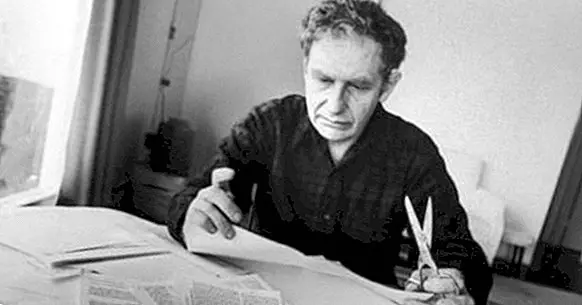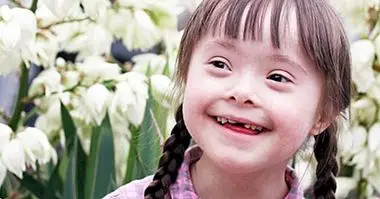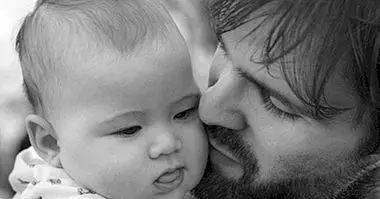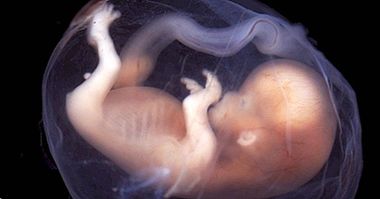The theory of moral development of Lawrence Kohlberg
The study of morality is something that is constantly generating dilemmas, doubts and theories.
Practically all people have asked themselves at some point about what is right and what is not, about the best way to prioritize how to become a good person, or even about the same meaning of the word "moral". However, many less have proposed to study not only what is good, evil, ethics and morality, but the way we think about those ideas.
If the first is the task of the philosophers, the second enters fully into the field of psychology, in which highlights the moral development theory of Lawrence Kohlberg .
Who was Lawrence Kohlberg?
The creator of this theory of moral development, Lawrence Kohlberg, he was an American psychologist born in 1927 that in the second half of the 20th century , from the University of Harvard, was devoted largely to investigate the way in which people reason in moral problems.
That is to say, instead of worrying about studying the appropriateness or inappropriateness of actions, as philosophers like Socrates did, he studied the norms and rules that could be observed in human thinking in relation to morality.
The similarities between Kohlberg's theory and Piaget's
His research was fruit of Kohlberg's theory of moral development, which was heavily influenced by the theory of the four phases of cognitive development of Jean Piaget. Like Piaget, Lawrence Kohlberg believed that in the evolution of the typical modes of moral reasoning there are qualitatively different stages of each other, and that curiosity to learn is one of the main engines of mental development throughout the different phases of life. lifetime.
In addition, both in Kohlberg's and Piaget's theory there is a basic idea: the development of the way of thinking goes from mental processes very focused on the concrete and the directly observable to the abstract and more general.
In the case of Piaget, this meant that in our early childhood we tend to think only of what we can perceive directly in real time, and that little by little we are learning to reason about abstract elements that we can not experience in the first person.
In the case of Lawrence Kohlberg, it means that the group of people to whom we can come to desire the good is getting bigger and bigger to the point of including those we have not seen or know. The ethical circle is increasingly becoming more extensive and inclusive, although what matters is not so much the gradual expansion of this, but the qualitative changes that occur in the moral development of a person as it evolves. In fact, Kohlberg's theory of moral development is based on 6 levels .
The three levels of moral development
The categories that Kohlberg used to indicate the level of moral development are a way of expressing the substantial differences that occur in someone's way of reasoning as they grow and learn.
These 6 stages fall into three broad categories: the pre-conventional phase, the conventional and the post-conventional phase .
1. pre-conventional phase
In the first phase of moral development, which according to Kohlberg usually lasts until 9 years, the person judges the events according to the way in which they affect it .
1.1. First stage: orientation to obedience and punishment
In the first stage, the individual only thinks about the immediate consequences of their actions, avoiding the unpleasant experiences linked to the punishment and seeking the satisfaction of their own needs.
For example, in this phase, the innocent victims of an event tend to be considered guilty , for having suffered a "punishment", while those that harm others without being punished do not act badly. It is an extremely egocentric reasoning style in which good and evil have to do with what each individual experiences separately.
1.2. Second stage: orientation to self-interest
In the second stage, people start to think beyond the individual, but egocentricity is still present . If in the previous phase it is not conceivable that there is a moral dilemma in itself because there is only one point of view, in this it begins to recognize the existence of clashes of interests.
Faced with this problem, people in this phase opt for relativism and individualism, not identifying with collective values: each defends his own and works accordingly. It is believed that, if agreements are established, they must be respected so as not to create a context of insecurity that harms individuals.
2. Conventional phase
The conventional phase is usually what defines the thinking of adolescents and many adults. In her, the existence of both a series of individual interests and a series of social conventions about what is good is taken into account and what is bad that helps to create a collective ethical "umbrella".
2.1. Third stage: orientation towards consensus
In the third stage, good actions are defined by how they affect the relationships one has with others. Therefore, people who are in the consensus orientation stage try to be accepted by the rest and they strive to make their actions fit very well into the set of collective rules that define what is good .
Good and bad actions are defined by the motives behind them and the way in which these decisions fit into a series of shared moral values. The attention is not fixed on how good or bad they may sound certain proposals, but on the objectives behind them.
2.2. Fourth stage: guidance to the authority
In this stage of moral development, the good and the bad emanate from a series of norms that are perceived as separate from the individuals . The good is to comply with the rules, and the evil is to break them.
There is no possibility of acting beyond these rules, and the separation between the good and the bad is as definite as the standards are. If in the previous stage the interest is put more in those people who know each other and who can show approval or rejection for what one does, here the ethical circle is broader and encompasses all those persons subject to the law.
3. Post-conventional phase
The people who are in this phase have as their reference their own moral principles that, in spite of not having to coincide with the established norms, they rely on both collective values and individual freedoms, not exclusively on self-interest.
3.1. Stage 5: orientation towards the social contract
The way of moral reasoning proper to this stage arises from a reflection on whether laws and norms are correct or not, that is, if they shape a good society.
It is thought about the way in which society can affect the quality of life of people , and one also thinks about the way in which people can change norms and laws when they are dysfunctional.
That is to say, that there is a very global view of moral dilemmas, by going beyond the existing rules and adopting a distanced theoretical position. The fact of considering, for example, that slavery was legal but illegitimate and that in spite of that it existed as if it were something totally normal would enter into this stage of moral development.
3.2. Stage 6: orientation towards universal principles
The moral reasoning that characterizes this phase is very abstract , and is based on the creation of universal moral principles that are different from the laws themselves. For example, it is considered that when a law is unfair, changing it should be a priority. In addition, decisions do not emanate from assumptions about the context, but from categorical considerations based on universal moral principles.



















